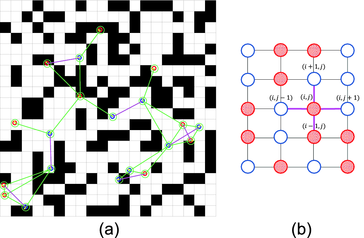Ising Model for Collective Decision Making
In our research about Collective Decision-Making, we work on the collective perception problem: A group of agents move in an unknown environment which is composed of units with two colors (like a chess board). The agents have to collectively estimate, which color is in majority. The agents can only perceive their local neighborhood and only communicate with their neighbors.
In the following paper, we investigate the influence of the preferences of individuals on the process of collective perception using the Ising model from the context of Social Impact Theory. We have a dynamic network of agents within the unknown environment. The results show that assigning preferences to the agents allows a designer to take control over the outcome of the collective decision-making process. In addition, the agents with a right conjecture can faster reach the correct conclusion even if only 20% of the initial population holds the target opinion.

Dissemination of opinions: (a) in multi-agent simulation; (b) on static lattice. Colors represent agents opinions (red for black, blue for white). Lines indicate possible connections at the current time step. Bold lines (magenta) show agents in communication with each other. The agents in (a), while moving, perceive the environment consisting of black and white cells. (Color figure online)
More details can be found here:
- Palina Bartashevich and Sanaz Mostaghim
- Ising Model as a Switch Voting Mechanism in Collective Perception (Download)
- EPIA Conference on Artificial Intelligence 2019. Lecture Notes in Computer Science, vol 11805. Springer, pp. 617-629, September 2019 --> Link